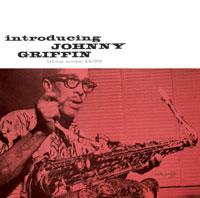Classic issues sought after Blue Note
This much sought after 1956 Blue Note release "books" at a few hundred dollars in mint condition-if it's a "deep groove" pressing. Even the second press goes for around $150. In case you're unfamiliar, "deep groove" refers to a circular groove in the label area, not a description of the vinyl cut itself. Early Blue Note pressings (and those of many other labels) featured the distinctive groove.
As part of a campaign to improve the quality of its reissues, physically and sonically, Classic Records and pressing plant RTI embarked on a program to re-create the thick (approximately 200gram) "deep groove" pressing, which also featured a "lipless" perfectly flat lead-in groove area. Raised "lips" were introduced so that stacked records on a changer would rest on the lips and not get scratched when they dropped on the platter. Not an issue anymore.
I remember RTI's Don MacInnis telling me how much work went into re-creating the original "deep groove" lipless 200g pressing Classic calls Quiex SV-P. Whatever it took, it was worth the effort both esthetically and sonically. When Classic introduced the new pressing format, it sent along a few titles pressed both in standard 180g and 200g SV-P, and while the difference wasn't overwhelming, it was obvious. The flat pressings were richer, and warmer sounding, but even the 180g was warmer and more mellow sounding than earlier Classic LPs thanks to changes to Bernie Grundman's mastering chain, and for the recent Classic mono series, a rebuilt Westrex mono cutterhead. Classic has also more accurately replicated the original label artwork on all of its reissues, and gone to the original style paper-on-cardboard jackets all of which makes their reissues look, feel and sound closer to the original than ever before.
Not having an original Introducing Johnny Griffin, I can't tell you how it compares to Classic's reissue. I can only tell you that the sound of this 1956 release recorded in Rudy Van Gelder's parents' Hackensack living room has all of the pluses and minuses of other recordings made there. The mono sound is big, full and immediate, with Griffin's tenor appropriately upfront, framed in a touch of reverb, and Wynton Kelly's piano somewhat boxy and in the background. When Kelly solos, though the piano's harmonics are somewhat stunted, the physicality and focus of the instrument and of the hammers hitting the strings is quite fine. Max Roach's drums are also well in the background and dynamically constrained, but his cymbal work is delicately drawn and detailed and there's decent extension and body to Curly Russell's bass, but don't expect the kind of clarity and depth more modern recordings offer. It's the "classic" Blue Note sound of the time: not "hi-fi" as we think of it today, but remarkably smooth, transparent, and satisfying. Classic has really warmed up and filled out its sound: this disc has rich, full bodied mids, and very clean, detailed highs. Can you sit, listen and look at a mono recording? Of course. This record proves it, if you need proof.
As for the music…oh, yes, the music: bopper Griffin, who is still active, was in his 20s when this record was made, and his speed agility and dazzling creativity on this date, make it still sound fresh. His playing has a satisfyingly hard edge-even when he's blowing a ballad like "These Foolish Things." It's his date and everyone gives him the space to shine. Griffin later went on to play with Thelonious Monk. It was a great match, as can be heard on Misterioso and Thelonious In Action. Both of those are part of The Riverside Tenor Sessions, Analogue Productions' 7 LP Monk box set. There are still a few copies left. Highly recommended, though some of the titles are now coming out on 45rpm special editions. It's a great time to be into vinyl, isn't it?



